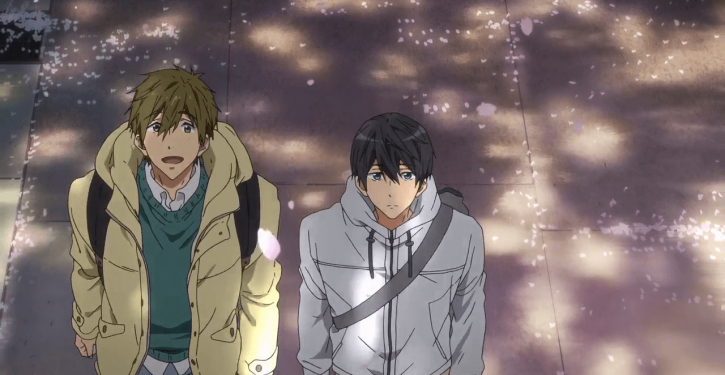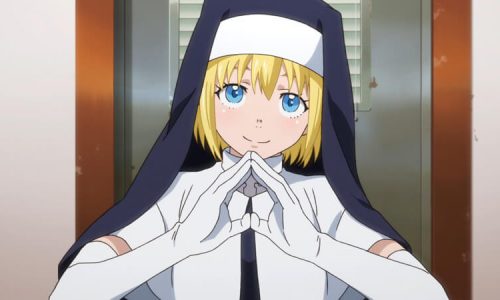Anime with a cast featuring visually appealing boys, ranging from the handsome, to the cute, to the gorgeous and the elegant—perhaps best described as the male version of moe anime, ikemen anime cover various kinds of stories, unified by the fact that their characters are easy on the eyes. While generally geared towards a female audience, they also have aspects accessible to anyone, whether it be the type of story, genre, or simply stellar animation.
Here are 5 starters to try!
Yuri! On Ice

©はせつ町民会/ユーリ!!! on ICE 製作委員会
Brimming with passion, confidence, and angst, this show delivers a powerful story that may be too hot for the rink. Showcasing an exceptionally wide variety of characters from countries around the world and further separates itself from other sports anime by putting a heavy focus on the relationships of these characters and the hardships they face.
Riding on the wave of interest in ice skating around Japan with national figure skating favourites Yuzura Hanyu and Mao Asada at its center, Yuri! on Ice brings yet more fans to the sport. But more than that, reaching even the ears and eyes of Olympic sportsmen and women, it has left a mark that will not be forgotten any time soon.
Nearing his late-twenties, main character, Yuri Katsuki is truly a rarity when it comes to lead characters. Facing the stresses of career and love, Yuri is able to develop in a way unique to those of us who are already out of high school. With coach and partner Victor at his side will Yuri be able to overcome his self-doubt and stand on top? Sit through this roller coaster of emotion to find out!
Viewers should also be excited for a supporting cast made up of not only the bubbly Pichit from Thailand, the overconfident J.J. from Canada, and the competitive Yuri Plisetski from Russia, but also characters from South Korea, the United States and Spain which are fairly uncommon in anime. Yuri! on Ice has really pulled out all the stops to bring viewers a heightened experience.
With items exclusive to only a few countries around the world Yuri! on Ice is sure to be a difficult series for serious collectors even to those living in Japan. But worry not as the sheer amount of fan-made and official goods for the show is never in short supply.
With Yuri’s hometown based in the town of Karatsu, Saga Prefecture one can visit the ‘real’ Hasetsu castle and shopping street. And as one might come to expect from reading the review, Yuri! on Ice once again takes it one step further and uses quite a few settings referenced from places all around the world.
Katsugeki/Touken Ranbu
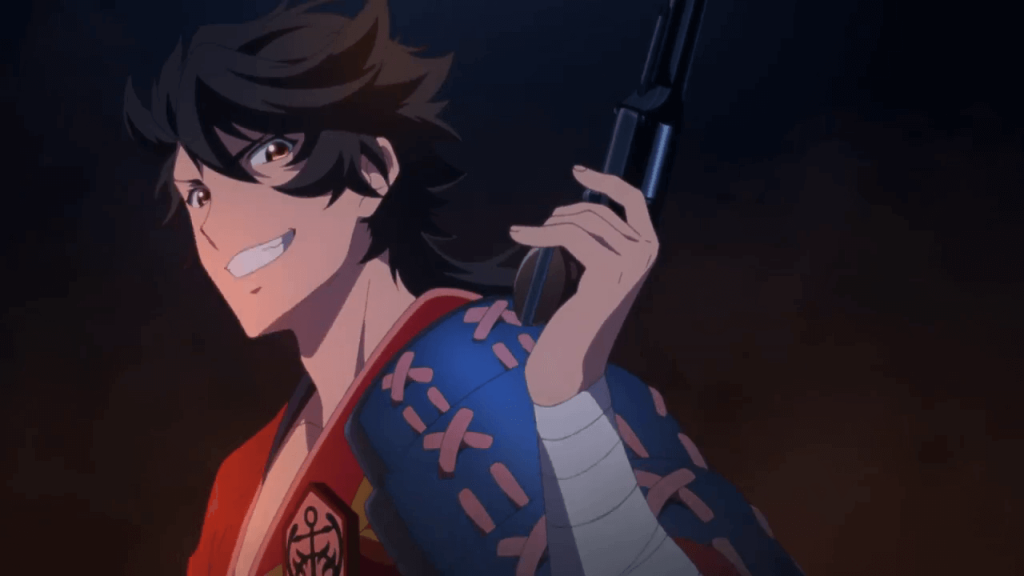
©Nitroplus・DMM GAMES/「活撃 刀剣乱舞」製作委員会
Setting its colorful cast of sword-wielding boys against the background of dramatic historical incidents, this second anime adaptation of the eponymous browser game is as packed with action and beautiful animation as it is with handsome characters of various flavors.
The year is 2205, and the Historical Revisionists, a shady group with time-travelling powers, are sending their forces into the past in order to alter history to serve their yet-unknown goal. This is where the Sword Warriors, our protagonists, come in―as physical manifestations of legendary weapons with fighting prowess to match, they’re summoned by a figure called Saniwa to counter the threat posed by the Revisionists, and are sent back in time on missions to protect history from their influence.
The story follows one such Sword Warrior, a young rookie named Horikawa Kunihiro, kind-hearted, naive, and still struggling to find his footing in the grand war to defend history. Initially paired with his more battle-hardened mentor figure, Izuminokami Kanesada, the clash of ideals between the two served to give the series a serious tone right from the starting dash, differentiating it from the franchise’s previous light-hearted adaptation. But far from being a lonely two-man trip, the series’ cast grows as the story progresses, and the duo was eventually joined by other Sword Warriors―Mutsunokami Yoshiyuki, the loud-mouthed life of the party with a habit of bickering with Kanesada; Yagen Toshiro, the quiet professional that prefers keeping to himself, and Tonbokiri, the gentle giant who is nevertheless formidable on the battlefield. The lively gang is not without friction, but as they brave the threat of the Historical Revisionists together, they grow and learn to work as a team.
The basic premise of hot samurai men doing a lot of cool fighting may not exactly be a novel idea on its own, but Katsugeki/Touken Ranbu’s charm comes out in its overall high quality. Handled by the animation powerhouse ufotable, the animation is especially gorgeous in the action sequences―if you’re looking for thrilling katana battle animations, this series will hardly disappoint. Not to be left behind, the music score and background sceneries also worked together effectively, bringing out the flavor of the historical periods featured in the story. A definite treat for the senses, it also offers a little more in terms of emotional depth, as the characters struggle with the issues that plague their battle to keep history on its rightful course, and what life means to them as a Sword Warrior.
Despite being an adaptation of a game, the series was also kind with its exposition, and inserted enough context for the premise to be easily digestible even for viewers unfamiliar with the franchise or even Japanese history in general. For those looking for a hook to start getting familiar with either of those, Katsugeki/Touken Ranbu might just be the right thing to watch.
Free! Iwatobi Swim Club
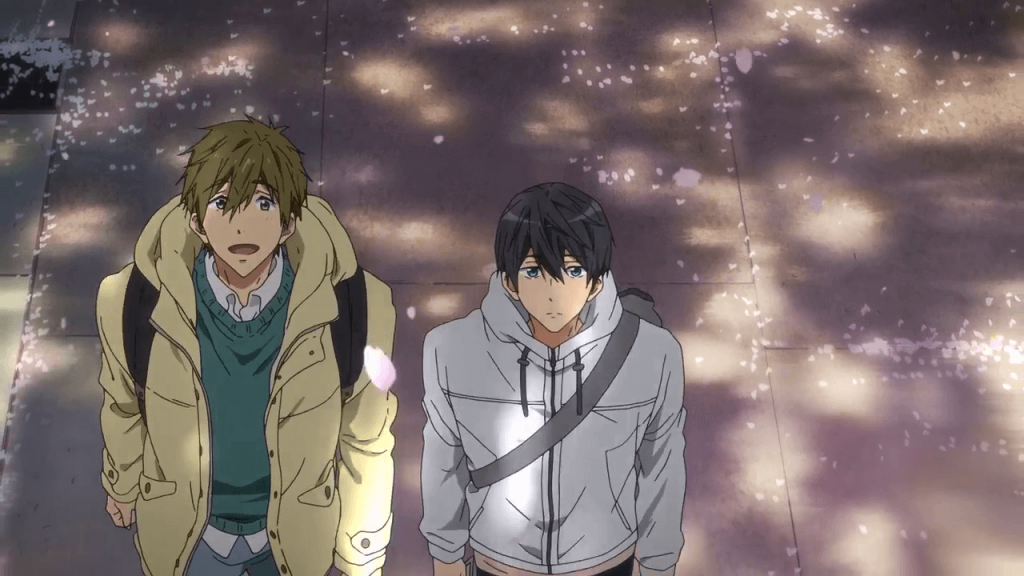
©2017 おおじこうじ・京都アニメーション/岩鳶高校水泳部TYM
Kyoto Animation once again gives us a beautiful, high-energy, and at times steamy show that many know simply as ‘the swimming anime’. In this show we follow the handsome characters of Iwatobi Swim Club who face the hardships of building a sports club at their school.
Starting with the second-years, Haru, our main character is the stoic type who has only one thing on his mind, swimming. In stark contrast the tall, almost motherly, Makoto seems to only have an interest in supporting his friends. The remaining two first-year club members Nagisa and Rei are a small, cute boy interested in having fun and an eccentric glasses-wearing boy who pursues the beauty of swimming, respectively. The energetic Rin from Samezuka, a rival school, rounds out our main cast of characters.
While the antics that these characters get into do not deviate too far from the usual Kyoto Animation formula, they are done with a unique visual flair and incredibly high-level of polish. Similarly, the sound design for both seasons of the show brings exactly what you would expect from this type of sports anime, a high-energy opening to hype viewers for each episode and a fun theme that gives viewers a bit of eye candy at the end of each episode. To any of the thirstier readers/viewers out there, consider giving this tall drink of water a try, you will not be disappointed.
Since its original release, Free! has enjoyed a second season as well as a movie. Furthermore, not only do several shops around Tokyo carry goods and merchandise featuring all of our favourite boys from the show, you can also find fan-made goods at the small circle run booths at Tokyo’s Comic Market.
Of course, if it’s not goods but an experience you’re after, then fans of the show may be excited to hear that you can actually visit the town in the show which is based on Tottori Prefecture’s coastal town, Iwami. Taking several hours to get there from well known tourist spots like Osaka and Kyoto it’s a little off the beaten path but well worth the trip if you want to visit the same beaches and neighborhoods these characters come from.
Uta No Prince Sama
Wildly popular within Japan, Uta no Prince Sama basically takes all of our favourite character tropes, dresses them up as handsome boys and sends them on their merry little way. It’s not hard to see how this show attracts so much attention―not an uncommon sight around Tokyo, the boys of Starish (the main group of the show) are everywhere.
While the songs are a bit sparse in the first season for an idol anime, this is quickly remedied in the following seasons as characters receive individual songs and collaborations. Within the wide library of music there are some real gems like Moonlight, sung by Ichinose Tokiya, and Map to the Future by Starish. If one is interested in further exploring the world of Uta no Prince Sama there is a series of nearly ten games on which the show is based.
As expected of the player character in a dating sim, Nanami Haruka, is just passive enough for just about anyone to step into her shoes and vicariously experience the kind of situations that would send the blood rushing to anyone’s face. We, the viewers get six beautiful boys to choose from the first season and that number quickly climbs to well over ten by the fourth season. One almost feels like a kid in a candy store, and with every flavour of candy they have all their bases covered.
Finally, as far as goods go it doesn’t look like the popularity of Uta no Prince Sama will be falling any time soon so rest assured, they will probably be here when and if you visit the homeland of all things Japanese. In addition to games, the series is also proud to sell CD’s, audio dramas and figurines. And if you’re lucky you might be able to go to find an anime cafe featuring the boys in their decorations and designs.
Prince of Stride: Alternative
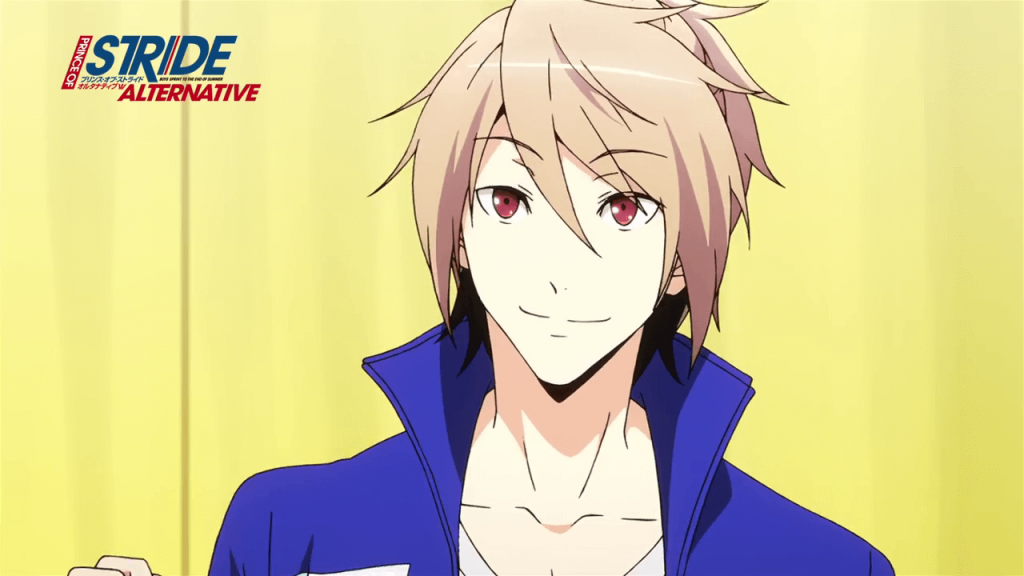
©2015 FiFS/KADOKAWA アスキー・メディアワークス刊/POSA製作委員会
Slick, speedy, light―Prince of Stride: Alternative captures the rush of running even from the get-go with its bright, sporty aesthetic. Based on the otome game Prince of Stride, this series mixes the intensity of sports with some comedic slice-of-life as the main crew dashes from the formation of their high school club to winning their first tournament.
While it may appear to be a marathon anime at a glance, Prince of Stride: Alternative is actually about the titular “stride”, a fictional sport that’s all at once parkour, free running, relay, and sprinting. Much like in a relay race, multiple runners run to complete divided parts of the track. However, the twist comes in the form of an additional unit in the team, the “relationer”―a team member whose job is to coordinate the runners’ timing in the relay exchange zone when they can’t see each other due to obstacles. The protagonist, the cheerful and hard-working stride fan Nana Sakurai, is one such relationer. Originally hoping to be join the Honan Academy’s stride club, she was given that role as well as that of a manager when it turns out that the club was on the verge of shutting down due to a shortage in members. Joined by like-minded classmate and skilled strider Takeru Fujiwara, as well as the talented-but-reluctant Riku Yagami, she succeeded in reviving the anemic Honan stride club, which now aims to win a regional tournament, clashing with rivals from various other schools as they progress. Needless to say, the entire lineup is not lacking in gorgeous faces.
While the show doesn’t stray far from the standard otome game and sports anime format, featuring everything from the failing high school sports club trope to the ‘female protagonist surrounded by dashing cute boys’ template, the original system of the sport featured in it does bring a unique set of dynamics to the cast, as well as opportunities to insert some heart-pumping animation in the races as the runners bolt over low obstacles and jump against walls in an effort to overtake their opponent. With the bouts of comedic interaction peppered along the story, Prince of Stride: Alternative makes for a good lighthearted watch with fresh visuals.

